Last year was the year I had both of my knees replaced (one in May and the other in November) and it was a year where I was very limited physically. For those of you who have seen some of the articles in this blog, you will realise that I have about an acre of land that I manage with a scythe. In between my two knee operations, I tried to do some scything, but it wasn’t really possible. What was I going to do with the field when I couldn’t scythe the grass? The answer turned out to be a community mow!
Looking for help and finding it
I wondered if it would be possible to find a person to help me with the scything. Through the Scythe Association of Britain and Ireland and their regular newsletter (The Windrow), I found a few contacts to try who ended up putting me in touch with Mary Ellis. Mary teaches scything and I think she is (or was) the secretary of the Scythe Association. She was very friendly and suggested organizing a “community mow”. I’d never heard of such a thing before.
A community mow essentially involves getting a range of different people to come around and just get the job done. Seems like a very old fashioned type of thing these days, where a group of people band together to help out a stranger, but it’s very nice that it still exists (the world isn’t such a bad place!). About a dozen people turned up on the assigned day with varying levels of scything ability. Some were rank beginners who were actually learning off Mary and some were quite experienced. I provided refreshments and pizza for lunch and everyone just got to it and got the grass cut. It was an amazing day.
You can see photos of the community mow day below.
Scything itself might sound like a crazy thing to do, but it’s very good exercise, a great way to cut grass, inexpensive, silent (it’s actually a peaceful thing to spend time in the garden cutting grass with a scythe – and the pheasants aren’t bothered by it either) and very satisfying. I let the grass grow reasonably long, scythe it, rake it up with a hayrake, let it die and then put it around the base of the trees and shrubs. The end result is a field that gets more and more wildflowers as the years progress and trees and shrubs that get healthier and healthier.
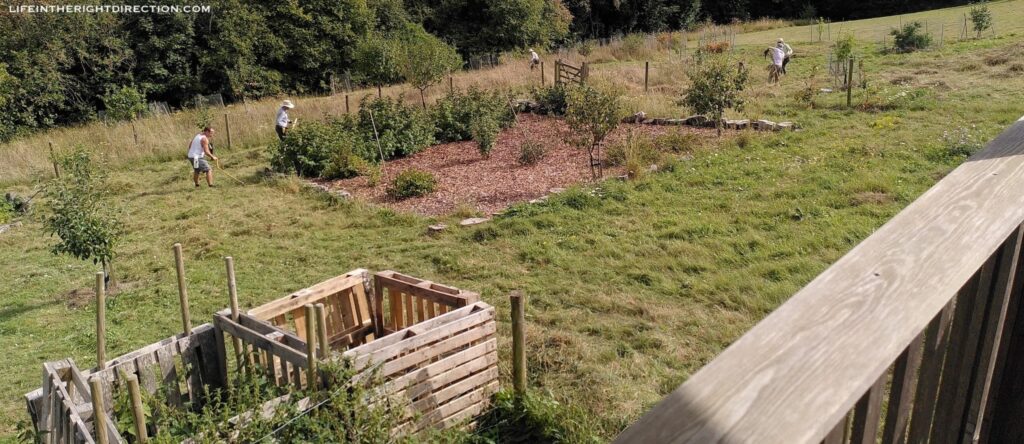
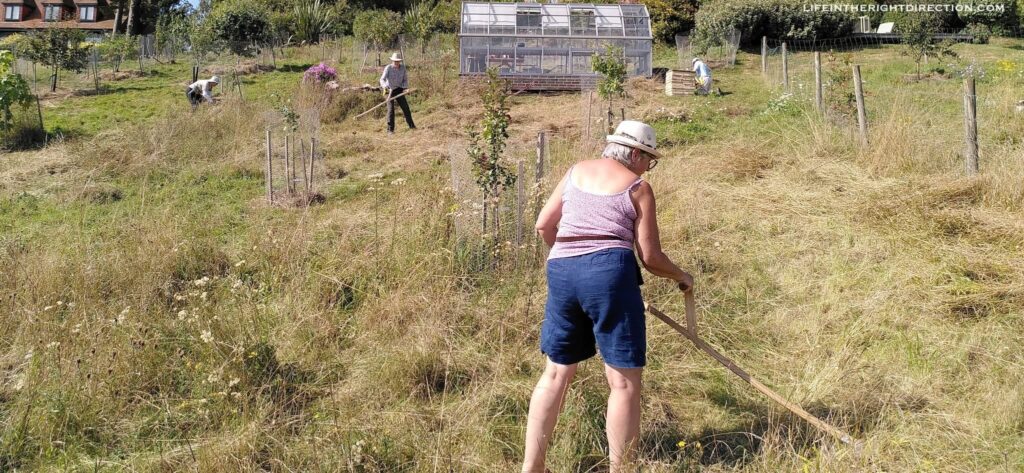
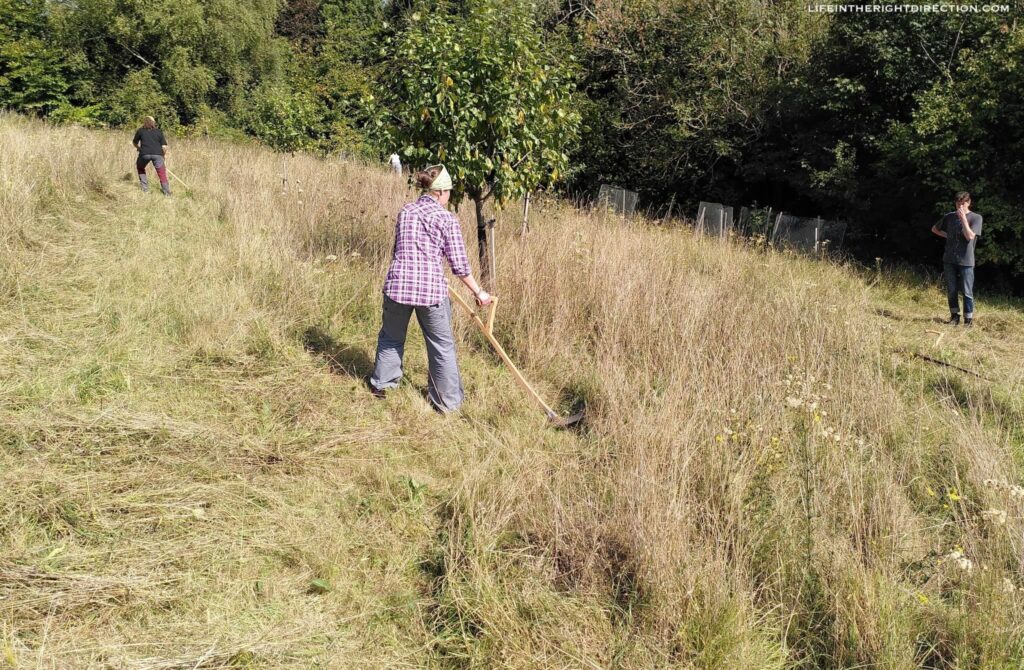
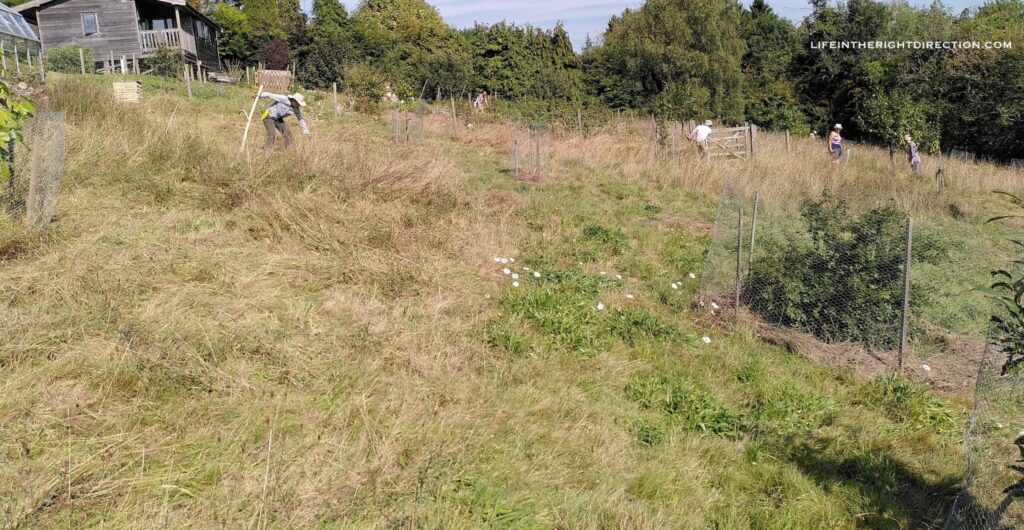
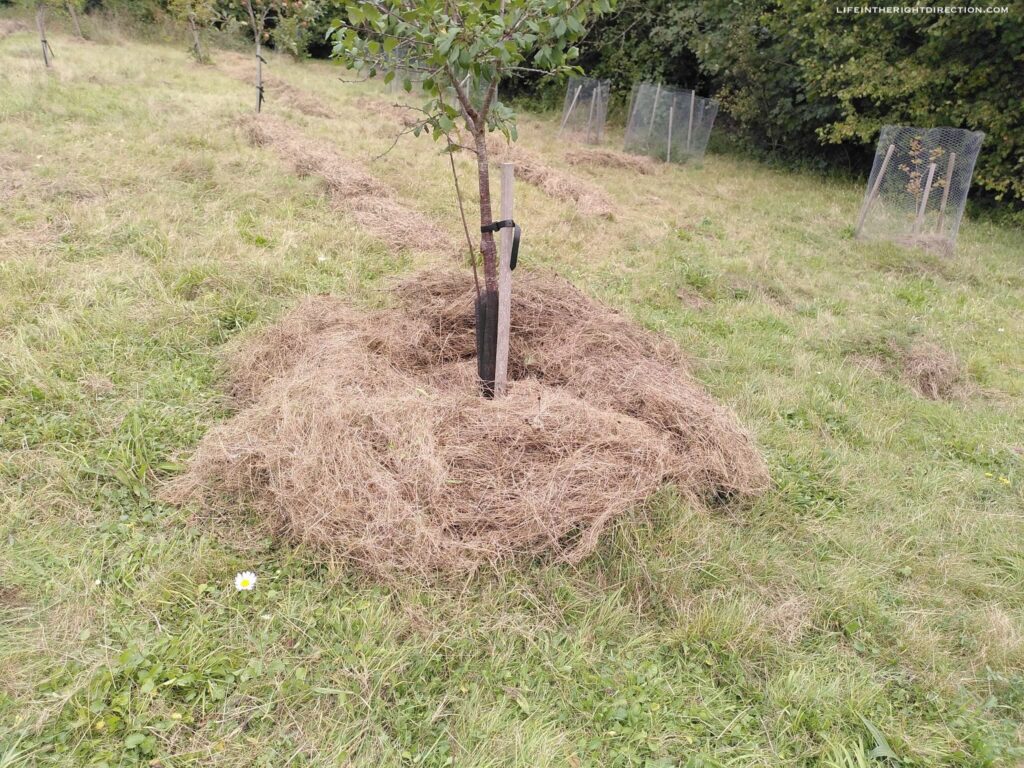
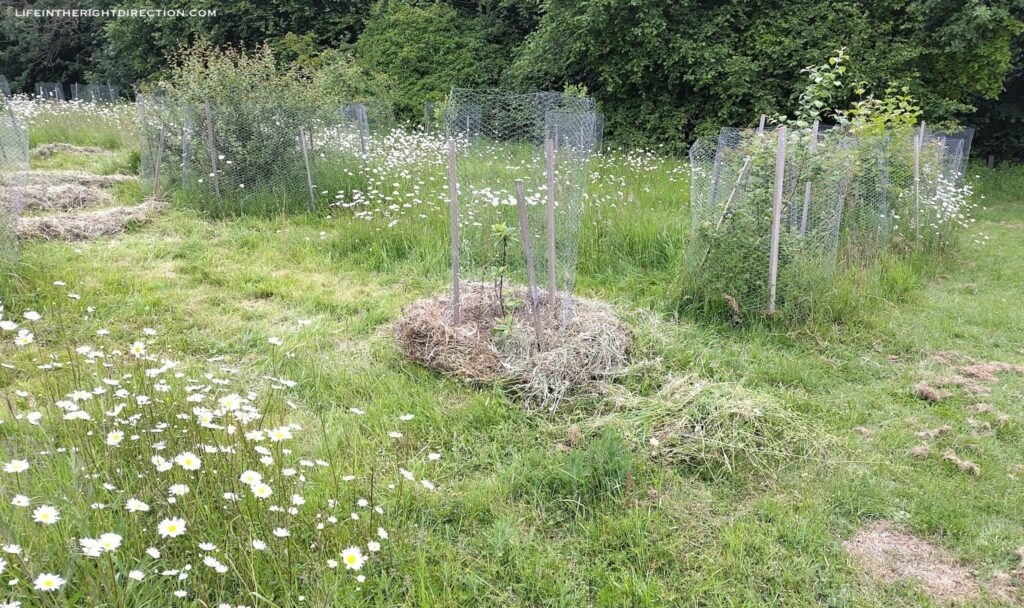
Leave a Reply